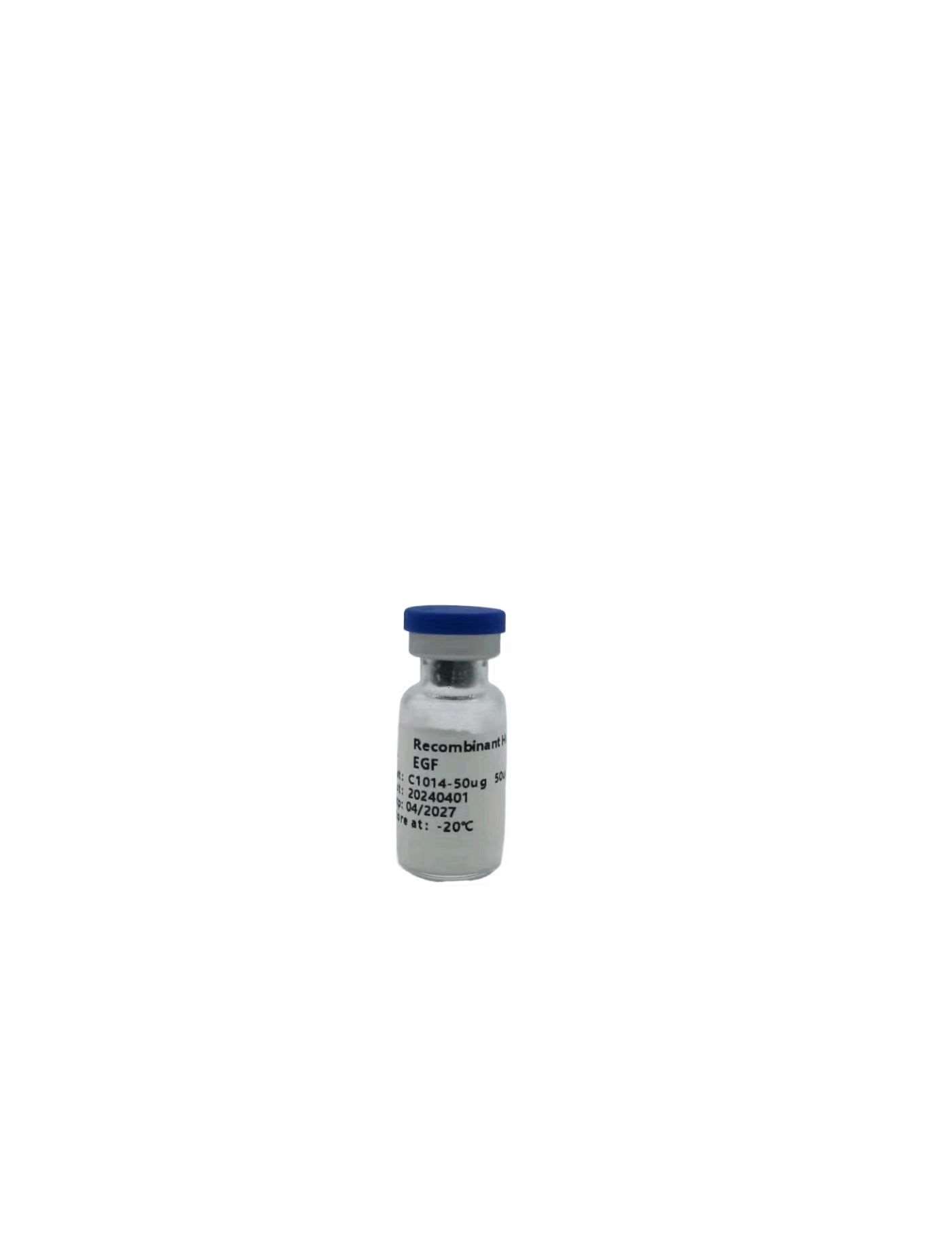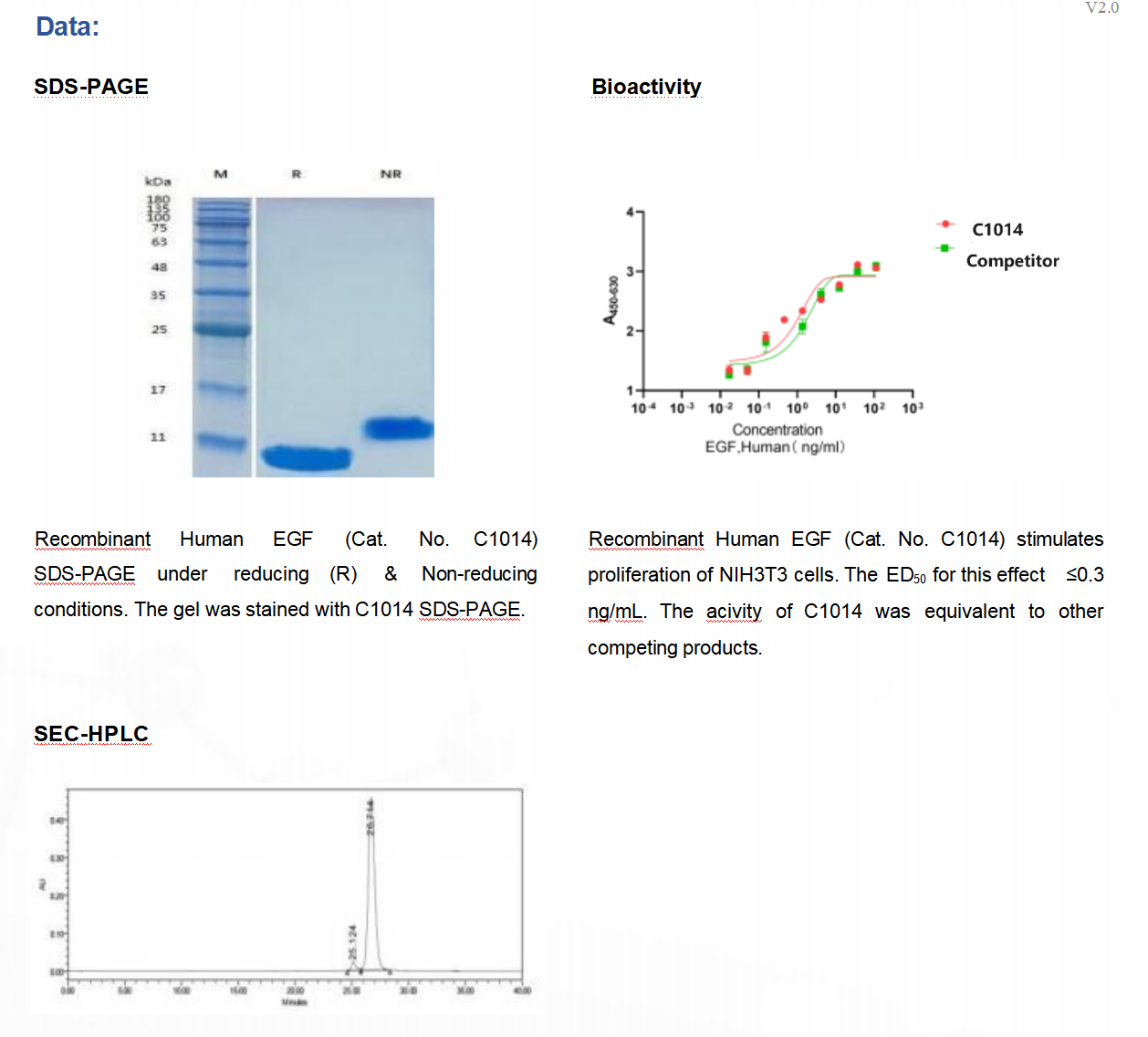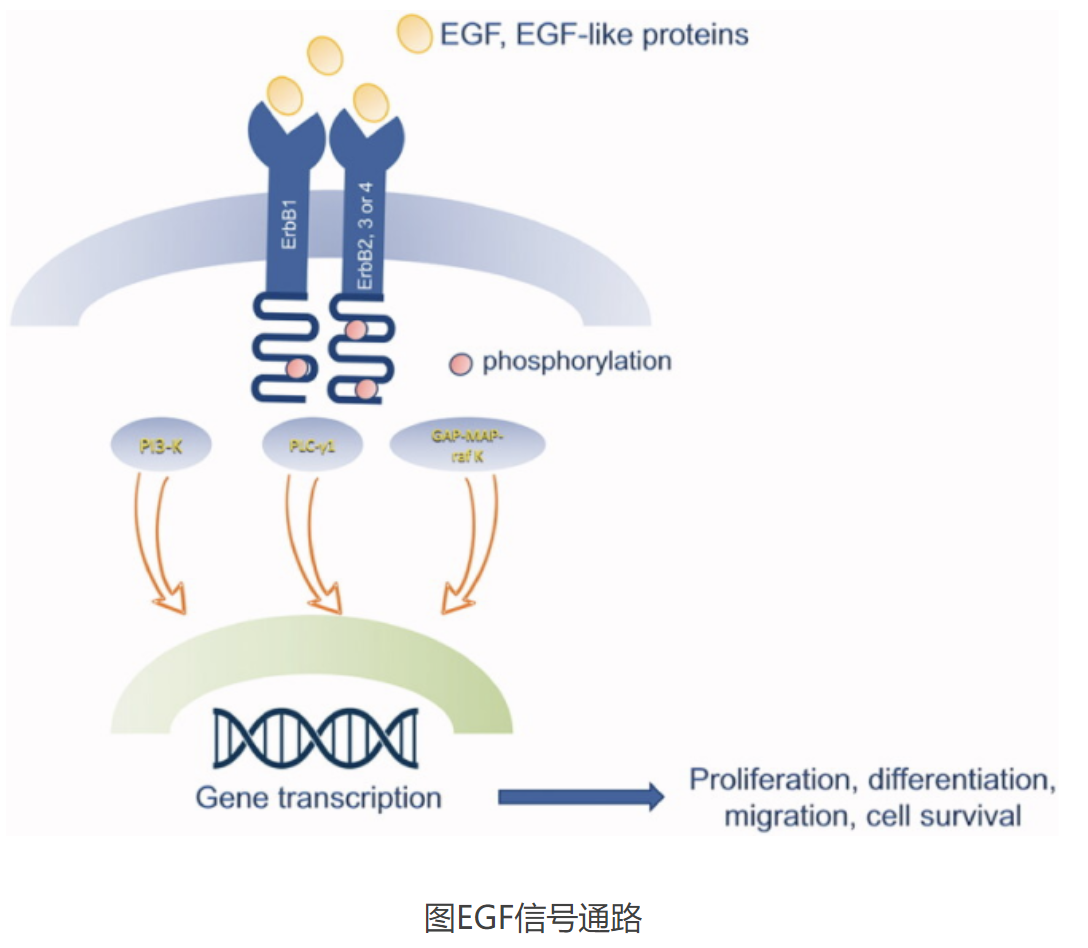



立即搜索



产品介绍
Source
Chinese Hamster Ovary cell line
Description
Human EGF (Asn971-Arg1023)
Accession # P01133
Predicted molecular mass
6.2 kDa
Specification:
Appearance
White powder, Colorless clear liquid after reconstitution
Purity
≥95%, by SDS-PAGE (under reducing (R) & Non-reducing conditions, visualized by Coomassie staining)
Endotoxin
≤10 EU/mg by the LAL method
Activity
Measured in a cell proliferation assay using NIH3T3 mouse embryonic fibroblast Cells. The ED50 for this effect ≤0.3 ng/mL.
Formulation
Lyophilized from a 0.22 μm-filtered solution containing PBS, 5% mannitol and 0.01% Tween 80, pH 7.4
Size
50 μg/vial, 1 mg/vial
Handling and Storage:
Reconstitution
It is recommended to redissolve in sterile deionized water.
Shipping
The product is shipped with blue ice.
Storage & Stability
24 months at -20°C to -80°C in lyophilized state
7-10 days at 2°C to 8°C under sterile conditions after reconstitution
6 months at -20°C to -80°C under sterile conditions after reconstitution
Use a manual defrost freezer and avoid repeated freeze-thaw cycles.
 |
Background:
This protein is a member of the epidermal growth factor superfamily. The encoded preproprotein is proteolytically processed to generate the 53-amino acid epidermal growth factor peptide. This protein acts a potent mitogenic factor that plays an important role in the growth, proliferation and differentiation of numerous cell types. This protein acts by binding with high affinity to the cell surface receptor, epidermal growth factor receptor. Defects in this gene are the cause of hypomagnesemia type 4. Dysregulation of this gene has been associated with the growth and progression of certain cancers. Alternative splicing results in multiple transcript variants, at least one of which encodes a preproprotein that is proteolytically processed. [provided by RefSeq, Jan 2016]
The epidermal growth factor (EGF) is a single-chain protein containing 53 amino acids; six of them are cysteine, forming disulfide linkages. Binding of EGF to EGF receptor (EGFR) is mediated through the N-terminal in the extracellular domain that is divided into four clefts. The EGF family of ligands includes eleven structurally related proteins, namely EGF, transforming growth factor α (TGF-α), amphiregulin (AREG), epigen (EPGN), heparin-binding EGF-like growth factor (HB-EGF), epiregulin (EREG), betacellulin (BTC), and the neuregulins (NRG1-4). These molecules have in common similar EGF-like motifs, and, due to their membrane-anchored nature, can act in a juxtacrine manner between two neighboring cells, or, in an autocrine/paracrine mode via proteolytic cleavage of the external EGF-like domain, which results in its release in the extracellular compartment. The EGF-like protein drives cellular signal transduction through the ErbB subclass of the Receptor Tyrosine Kinase superfamily, which consists of four members EGFR (also known as ErbB1), ErbB2, ErbB3, and ErbB4. EGF has long been known for its role in promoting proliferation of intestinal epithelial cells. EGF is produced by epithelial niche cells at the base of crypts in vivo and is routinely added to the culture medium to support the growth of intestinal organoids ex vivo. The binding of EGF or EGF-like proteins induces oligomerization of EGFR (ErbB1) with ErbB2/c-neu, ErbB3, and ErbB4, and subsequent phosphorylation of the receptor, leading to the transduction of different pathways: PLC-γ1, PI-3 Kinase, GAP-MAP-raf kinase. These pathways are involved in several functions, such as cell proliferation, migration and survival.
 |
图EGF信号通路
[1] Abud HE, et al. 2021. Front Cell Dev Biol. 9:685665.
[2] Sabbah DA, et al. 2020. Curr Top Med Chem. 20(10):815-834.
[3] Mangiavini L, et al. 2022. Ann Med. 54(1):37-50.
仅供科研或生产使用,不可直接应用于人体。
规格/储存条件/有效期
| 规格 | 50ug |
| 储存条件 | -20℃ |
| 有效期 | 24个月 |
COA下载
